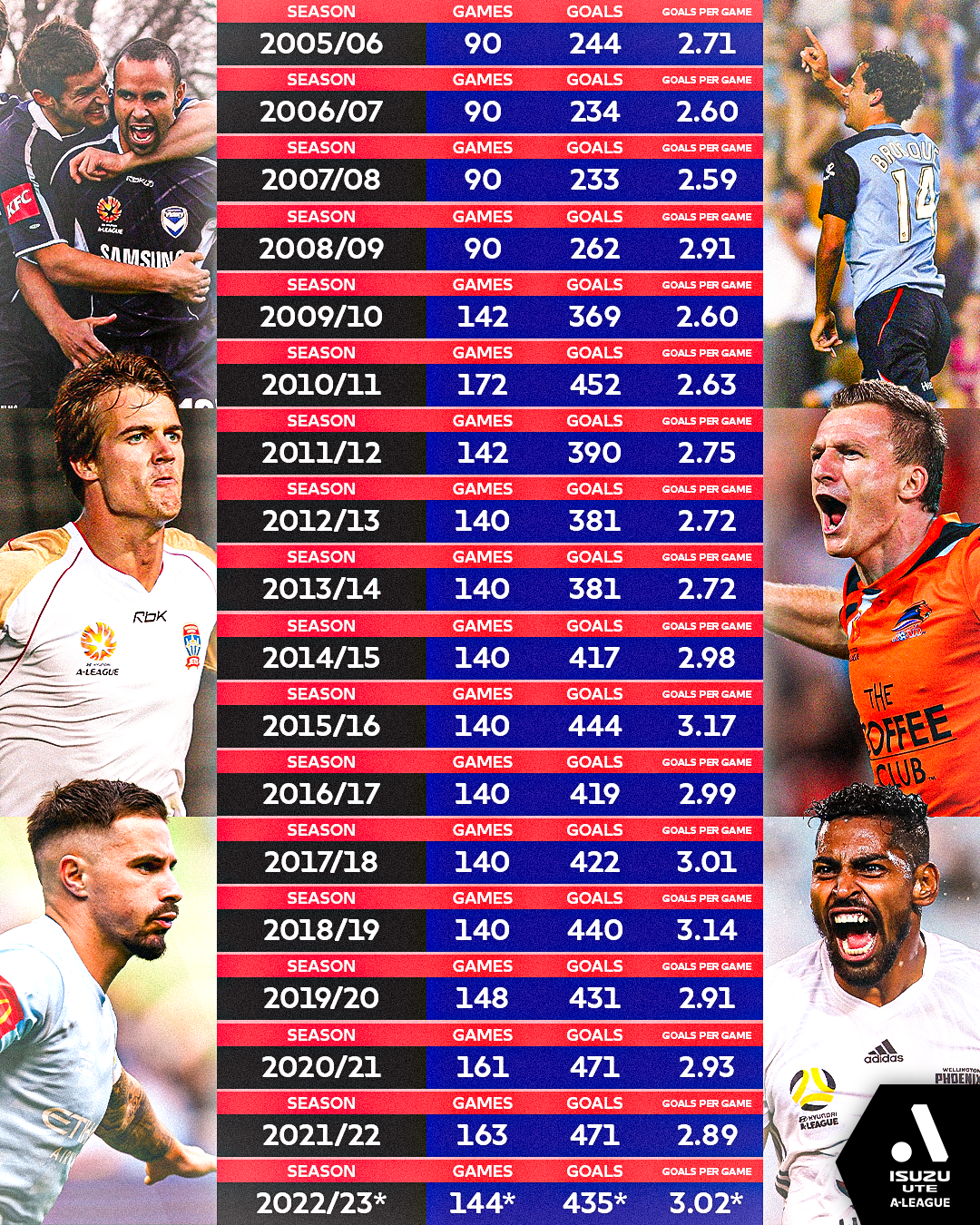Both the A-League Men and some of its clubs are poised to set new benchmarks in attack, writes Tom Smithies.
A lot of the training drills you’ll see at A-Leagues clubs most days of the week have several small goals at one or both ends of the pitch. Some weekends this season you’d be forgiven for thinking some teams have sneaked those extra goals into the actual games.
If it has felt like the goals are raining in this season, the data tells us that such intuition is actually true. Within the next 10 days or so, both the Isuzu UTE A-League and some of its clubs could be celebrating various goalscoring records. For strikers and supporters – if not for defenders – these are bountiful days to enjoy.
This season the 12 A-League Men’s clubs have scored 435 goals between them in 144 games, at an average of 3.02 goals per game. To put that in historical context, the most goals scored in any season is 471 achieved twice – last campaign in 163 games including the finals and also the season before (over 161 games). With 19 games remaining this season including the finals, another 37 goals (or two per game) will set a new record for total goals in a season.

It’s worth noting that this doesn’t simply come down to playing more games – in 2010-11 there were 5% more matches than there will be this season, but an average of close to half a goal per game less than this year so far. The graphic attached to this story shows a clear rise in the number of goals scored as the A-League has matured.
READ MORE ON KEEPUP
EPIC: How Macarthur physio’s 170km united Aussie football
ULTIMATE GUIDE: Everything you need to know for Liberty A-League Prelim Final
SCOTLAND VIEW: Image fuels ‘love-in’ for Aussie ‘unsung hero’
CITY SLICKERS: How a football empire set a new A-Leagues benchmark
NEW BOSS: Wellington Phoenix announced Talay replacement
HOPKINS: How a change of president in Malaysia delivered the most successful coach in Liberty A-League history
HOLLMAN: ‘Surreal’ rise of emerging Aussie football family with three A-Leagues players under 21
TOPOR-STANLEY: A-Leagues legend brings down the house with hilarious pre-retirement gag
In fact this season comes close to being the most prolific on an averaged basis – only two seasons have produced more goals per game than this campaign has to date. In 2018-19 it was 3.14 per game and three teams did their best to drive that statistic for all the wrong reasons: Western Sydney conceded 54 goals (at an average of two per game), Central Coast let in 70 (at 2.59/game) and Brisbane 71 (2.62/game).
In 2015-16, the goals per game hit 3.17, the highest there has been in a season – driven by the 63 goals scored between them by Bruno Fornaroli, Jamie Maclaren and Besart Berisha. In no other season have the top three scorers contributed as many goals, a number which alone constituted 14% of all goals scored that season. A certain Aaron Mooy was absolutely in his pomp too, contributing 11 goals and 20 assists for Melbourne City.

This year it’s a collective blitz of goalscoring, driven by coaches who want to win by scoring more times than the opposition, whatever that number needs to be.
To prove the point, the Mariners under Nick Montgomery are two goals short of their highest total in a regular season, the 50 scored in 2010-11 where that regular season had four more games. That same campaign Adelaide hit 51 goals in the regular season – this term they need four in their last two games to beat that.
To put it another way, in all the 17 seasons of the A-League Men, only nine times has a team scored goals at an average of two goals per game or more in a season. In 2022-23, with two rounds to go, we have three teams tracking to hit that ratio: the Mariners and Adelaide are on exactly two goals per game, while newly re-crowned premiers Melbourne City are scoring at 2.29 goals per game.
We’re not imagining it – the goals are flying in.




